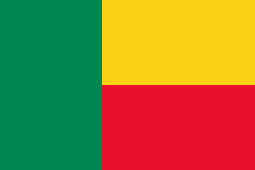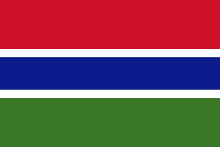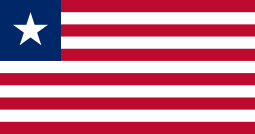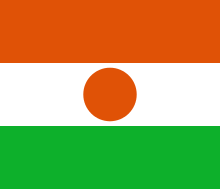ECOWAS rail
One of the goals of the Economic Community of West African States (ECOWAS) is the development of an integrated railroad network.
Aims include the extension of railways in member countries, the interconnection of previously isolated railways and the standardisation of gauge, brakes, couplings, and other parameters.
Proposed lines
The first line would connect the cities and ports of Lagos, Cotonou, Lomé and Accra and would allow the largest container ships to focus on a smaller number of large ports, while efficiently serving a larger hinterland. This line connects 3 ft 6 in (1,067 mm) gauge and 1,000 mm (3 ft 3 3⁄8 in) metre gauge systems, which would require four rail dual gauge, which can also provide standard gauge.[1]
Gauge (railway)
-
 Benin Transport 1,000 mm (3 ft 3 3⁄8 in)
Benin Transport 1,000 mm (3 ft 3 3⁄8 in) -
 Ivory Coast Transport 1,000 mm (3 ft 3 3⁄8 in)
Ivory Coast Transport 1,000 mm (3 ft 3 3⁄8 in) -
 Burkina Faso Transport 1,000 mm (3 ft 3 3⁄8 in)
Burkina Faso Transport 1,000 mm (3 ft 3 3⁄8 in) -
 Gambia (nil)
Gambia (nil) -
 Ghana Transport 1,067 mm (3 ft 6 in) proposed conversion to 1,435 mm (4 ft 8 1⁄2 in)
Ghana Transport 1,067 mm (3 ft 6 in) proposed conversion to 1,435 mm (4 ft 8 1⁄2 in) -
 Guinea-Bissau (nil)
Guinea-Bissau (nil) -
 Liberia Transport 1,435 mm (4 ft 8 1⁄2 in); 1,067 mm (3 ft 6 in)
Liberia Transport 1,435 mm (4 ft 8 1⁄2 in); 1,067 mm (3 ft 6 in) -
 Niger (nil)
Niger (nil) -
 Nigeria Transport 1,067 mm (3 ft 6 in); 1,435 mm (4 ft 8 1⁄2 in)
Nigeria Transport 1,067 mm (3 ft 6 in); 1,435 mm (4 ft 8 1⁄2 in) -
 Senegal Transport 1,000 mm (3 ft 3 3⁄8 in)
Senegal Transport 1,000 mm (3 ft 3 3⁄8 in) -
 Mali Transport 1,000 mm (3 ft 3 3⁄8 in)
Mali Transport 1,000 mm (3 ft 3 3⁄8 in) -
 Sierra Leone Transport 1,067 mm (3 ft 6 in)
Sierra Leone Transport 1,067 mm (3 ft 6 in) -
 Togo Transport 1,000 mm (3 ft 3 3⁄8 in) (suspended)
Togo Transport 1,000 mm (3 ft 3 3⁄8 in) (suspended) -
 Guinea Transport 1,000 mm (3 ft 3 3⁄8 in); 1,435 mm (4 ft 8 1⁄2 in)
Guinea Transport 1,000 mm (3 ft 3 3⁄8 in); 1,435 mm (4 ft 8 1⁄2 in)
Summary of different gauges:
- 1,000 mm (3 ft 3 3⁄8 in) 4,472 km 42.7%
- 1,067 mm (3 ft 6 in) 4,593 km 43.9%
- 1,435 mm (4 ft 8 1⁄2 in) 1,409 km 13.5%
Standards
- Brakes: Air brakes
- Electrification: 25kV AC
- Couplings: vary
Maps
See also
- Economic Community of West African States
- AfricaRail [2]
- Dakar-Port Sudan Railway
- West Africa Regional Rail Integration
References
This article is issued from Wikipedia - version of the 10/25/2016. The text is available under the Creative Commons Attribution/Share Alike but additional terms may apply for the media files.